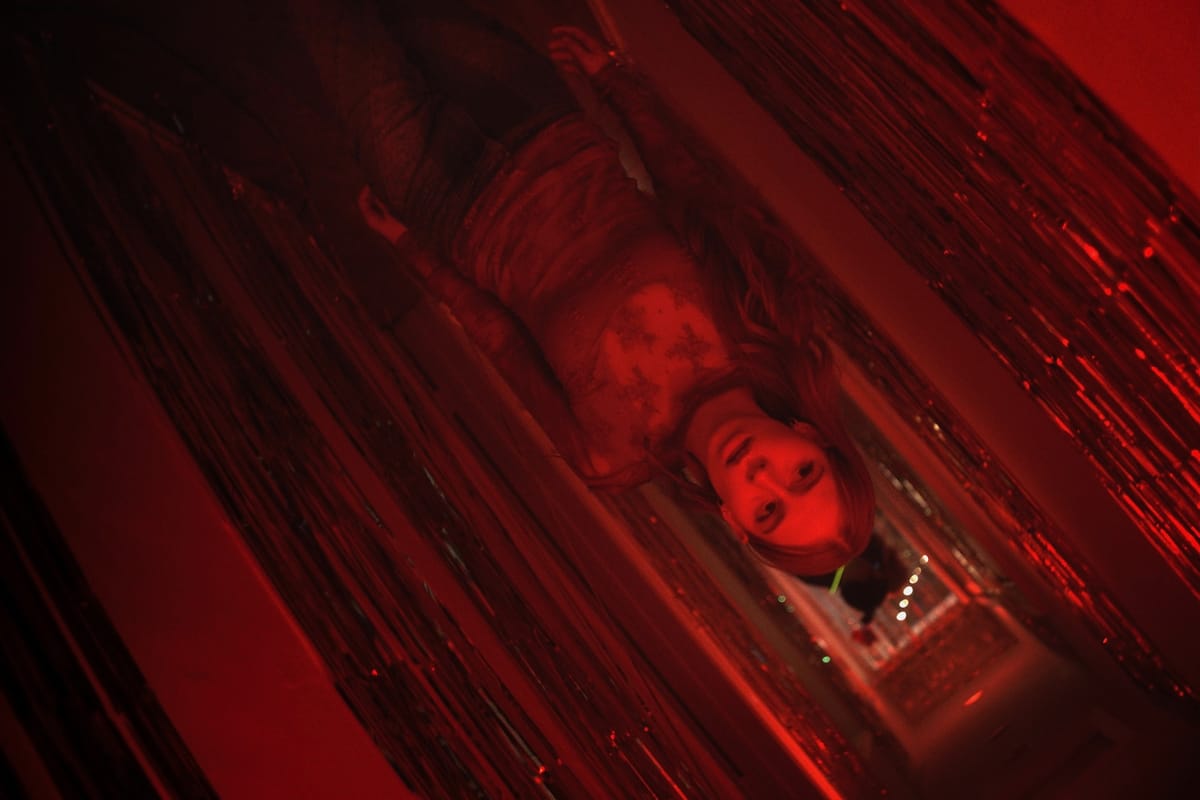
Filmmaker Erin Brown Thomas doesn’t typically answer calls from unknown numbers. But when you’re waiting to hear if your project has been selected to screen at Sundance Film Festival, you try to stay alert.
It was a week before Thanksgiving, and Thomas and her husband, fellow filmmaker Jake Thomas, were working on an application for another program. Her phone rang — an unknown number. Shoot. It was still a week before she was expecting any news. She ignored the call.
“Sundance” is all Thomas saw on the voicemail message before calling back. On the other end was Adam Montgomery, senior manager and programmer in Sundance’s Programming Department. They wanted Chasers, Thomas’s ambitious 31-minute pilot, at the festival.
“I just start weeping,” Thomas recalls. “I start saying, ‘Say it again!’”

Thomas got to relive the moment by making calls to co-producer Elle Shaw, and lead actor, co-writer and co-executive producer Ciarra Krohne to share the news.
“It was so fun calling people, I decided ‘I'm going to spread this out over a couple days,’” Thomas says.
She occasionally recorded her calls to capture her peers’ excitement. She ended up with three hours of footage and shared the highlights on social media.
@erinbrownthomas_film Joy multiplies when shared 🥰🥹 • • I wish you could see how hysterical I was when a programmer called me to tell me that our episodic pilot #chasers got into #sundance. My mom was just as emotional as me, and my husband had to literally keep me from falling. “Devastatingly happy” he described it as. You can still see a bit of that in my calls with Elle Shaw and Ciarra Krohne - the first people I called. • Thank you @sundanceorg. Congrats to my fellow officially selected filmmakers. See you in January! • #indietv #dontwaitjustmake ♬ original sound - erin brown thomas
Now Chasers is set to screen alongside two other premiere episodes at Sundance as part of the festival’s Episodic Pilot Showcase.
Chasers follows Sophia, an aspiring musician, at a Los Angeles house party as she “pursues her crush through a crowd of hopeful dreamers chasing empty promises,” according to the project’s tagline.
The story is told as a “oner,” where the entire 31-minute episode unfolds with no camera cuts or breaks to interrupt the flow of the narrative.
“I knew we could keep the camera moving and for many instances we could get a sense of an entire story or backstory or world that these characters are going in through just a quick little snippet,” Thomas says.
Filming lasted four nights. The clips, the longest of which is about six minutes long, are edited together with visual effects, but don’t try to find a transition. Thanks to visual effects supervisor and artist Avi Kaye, “It would just look like one long take,” Thomas says.
The “oner” is like a closely choreographed dance where actors and crew have to move in sync. Longer scenes allow actors to find their rhythm but create chaos for the crew, according to Thomas.
“You're putting your trust in your fellow performers and your crew in order to know that when you put your best performance out there, that we're not going to lose that take,” Thomas says.
This approach also entices people to stick around and wait for a reveal, Thomas says, as opposed to aimlessly cutting from character to character.
To get there, the viewer constantly returns to Sophia, played by Krohne.

“We're using Sophia's storyline to honestly create cultural conversation around exploitation in the lives of urban creatives,” Thomas says.
Thomas describes Chasers as a “traumedy.” That is, a drama that masquerades itself as a comedy until an emotional gut punch.
Thomas is collaborative in nature — “I think you have to be in film” — and is quick to spread praise for her cast and crew.
She calls out the brilliant work of her cinematographer, Beth Napoli, production designer Pete Hickok, and gaffer, Zachariah Dalton. The crew had to ensure proper lighting while hiding any and all camera equipment since the viewer is continuously moving through the scene.
Meanwhile, co-producer and trinity operator Hayden Greiwe gets a shoutout for his steady hand and eye for composition.

In total, there was about 14 hours of film for Thomas and editor Joe Siebert to work with.
“Depending on how we put [takes] together, it affects the chemistry of the piece as a whole,” Thomas says.
Chasers screens at Sundance as episodic, but it was initially created as a standalone project told across its 32-page script. A “stupid length” for festival programming, Thomas says.
“There is not a strong pipeline for distributing things at that length as films.”
That’s when Thomas started to think of Chasers as a series. The only thing that needed to change was the end credits, which felt more like a period than an ellipses, according to a friend.
Swapping the credits with a fade-to-black breathed new life into Chasers and prepared it for its new life at Sundance. The pilot will also screen at Slamdance Film Festival.
“We had initially conceived of maybe making a feature version, and that is still on the table. But now that we have these plans for an episodic world, we also realize that sometimes you can increase your cultural conversation around a project if it's serialized … if it goes on longer,” Thomas says.
For Thomas, that can mean independently financing the project and picking up where the story leaves off, or working with a production company to develop a new series that uses Chasers as a proof of concept.
“Of all the projects I've ever done, this was the one that was both the hardest but just had this feeling of inevitability from the start,” she says.
Sundance takes place Jan. 23–Feb. 2 in Park City, Utah.

